Live stream 19:30 CET 28 March 2021
Review of further experiment recordings by volunteer DAVE, including some at higher frame rates and in some cases 2 cameras. Combined with new techniques I have developed to merge sequence frames, nearly complete tracks have been recorded revealing in breathtaking detail various forms of traces that do not behave like standard kinetic trajectories.
Some observations are similar to those by Ken Shoulders in 1983 and with data already demonstrated by many authors, including myself, the present imagery could provide explanations for the form of, so called, Strange Radiation tracks.
Crack formation
Some of the largest and most interesting features produced in VEGA experiments have been born on surface features or gaps between electrodes. In the image below which was also the title frame for the live discussion above, it appears that the oscillating emission is coming from the small gap between two brass plates that form part of the cathode.
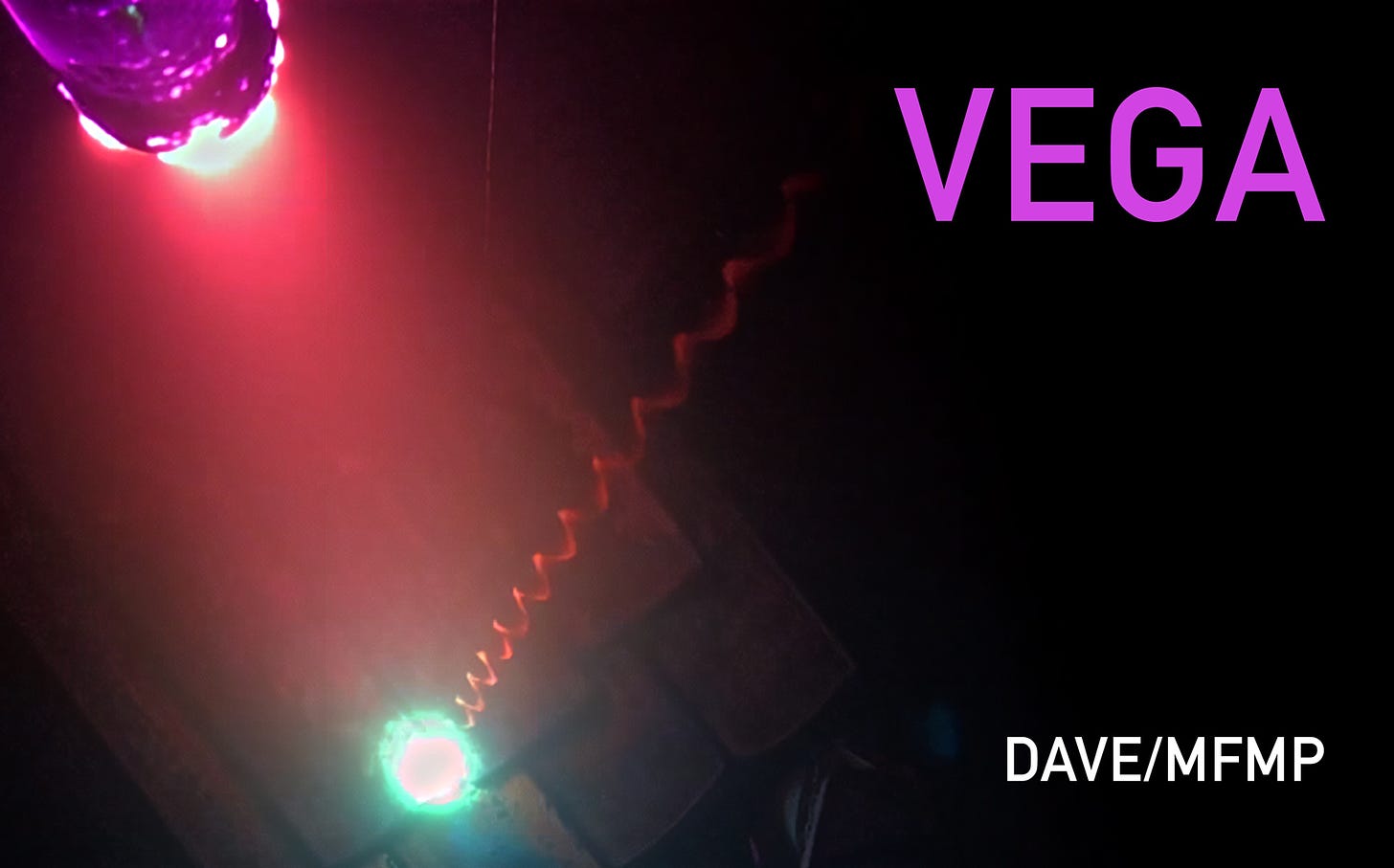
I appears as if the track is only ‘lit’ when it is in the excited gas area and goes dark when it leaves, is it reflecting or re-emitting the light it is exposed to? Regardless, this recorded behaviour implies that it is not producing its own light. Moreover, despite being emitted from the gap between two plates on the cathode, it does not fly into the anode which is in the top left of the frame. The rest of the reactor enclosure is at cathode potential, together, this may suggest that whatever the track is made from, it is neutral. You can download the full resolution uncompressed 60fps sequence here.
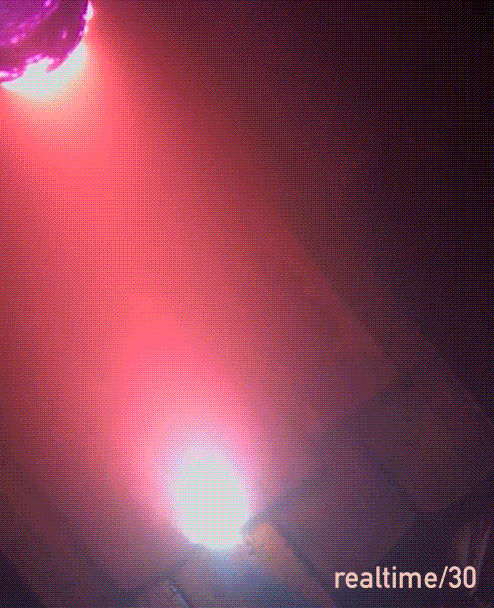
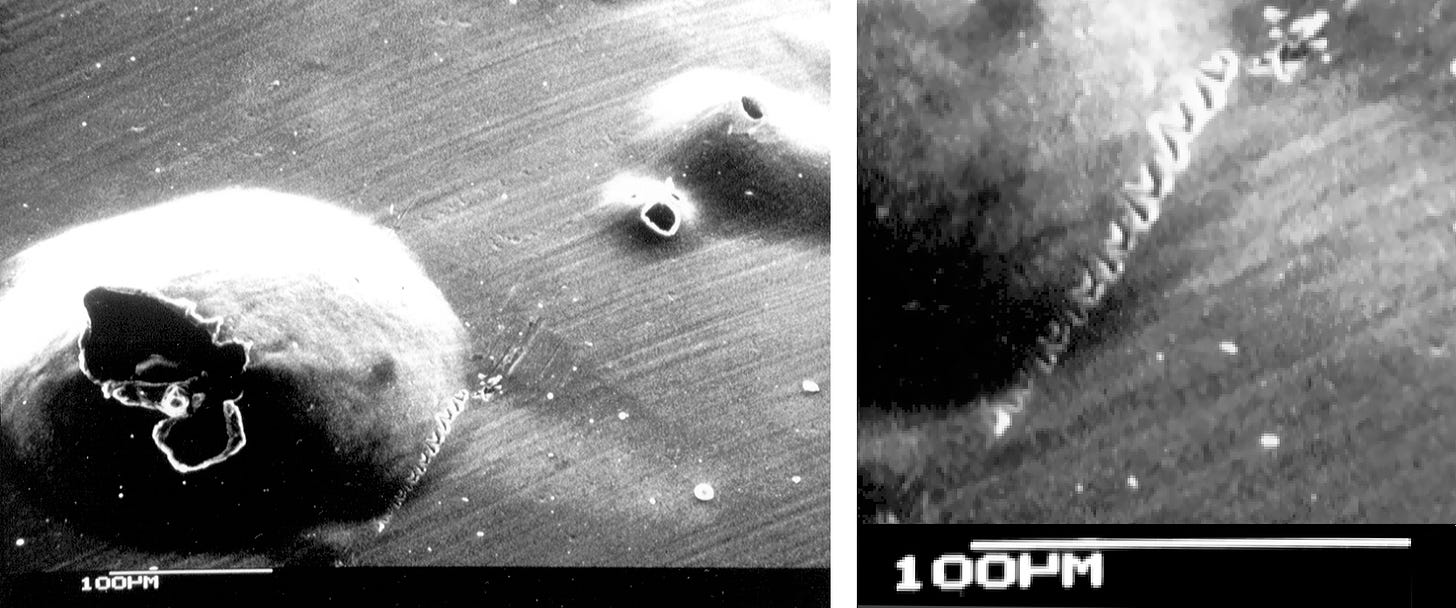
Twisted filaments
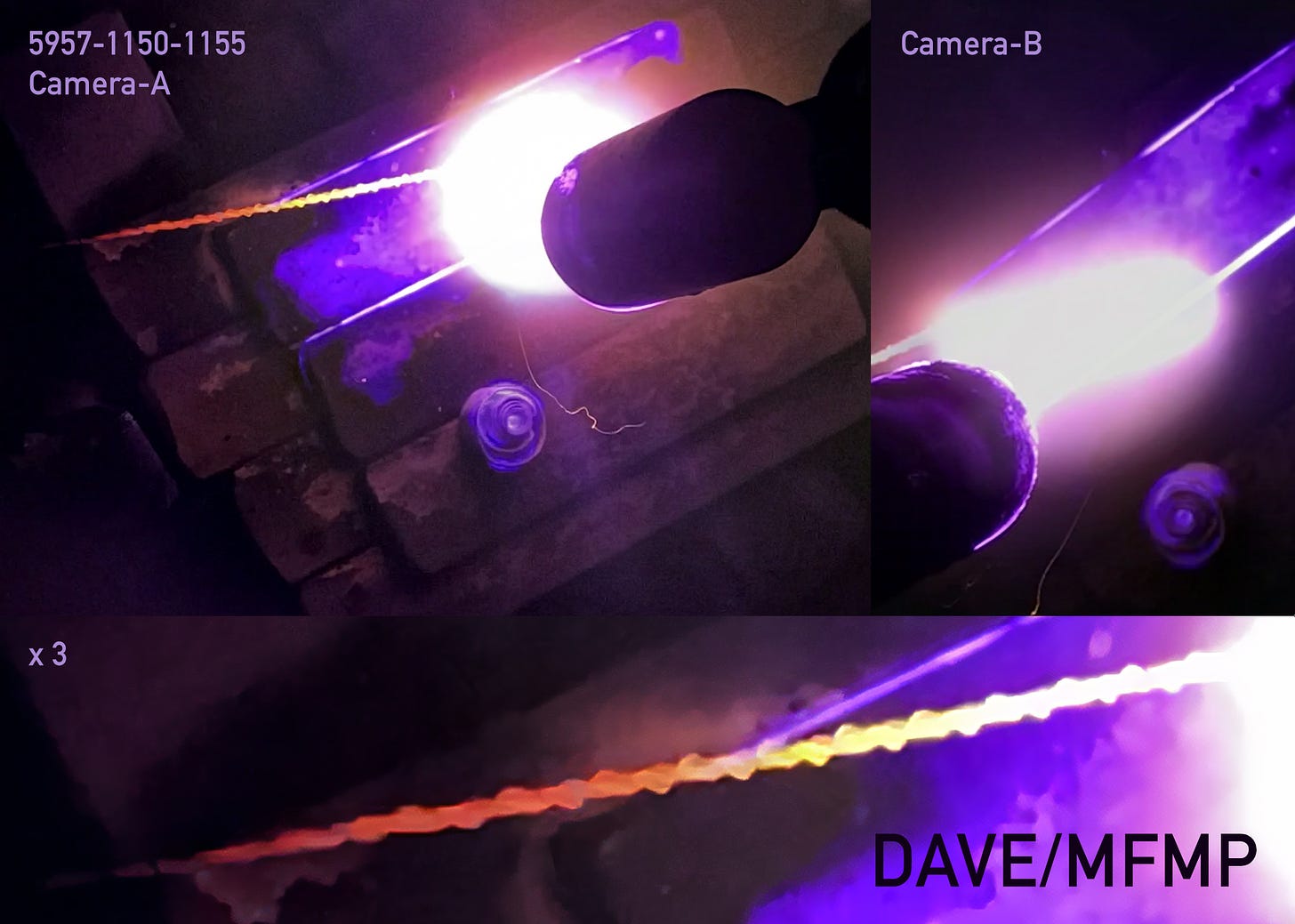

In the below image, there are two emissions of similar type, diameter and velocity recorded on two cameras simultaneously, however, trace one is rotating at a higher rate than trace two. By simulating a further increase in rotation, the 3D path is a very good match for the 2D constrained SR track first presented in 2010 by Claude Daviau et. al.
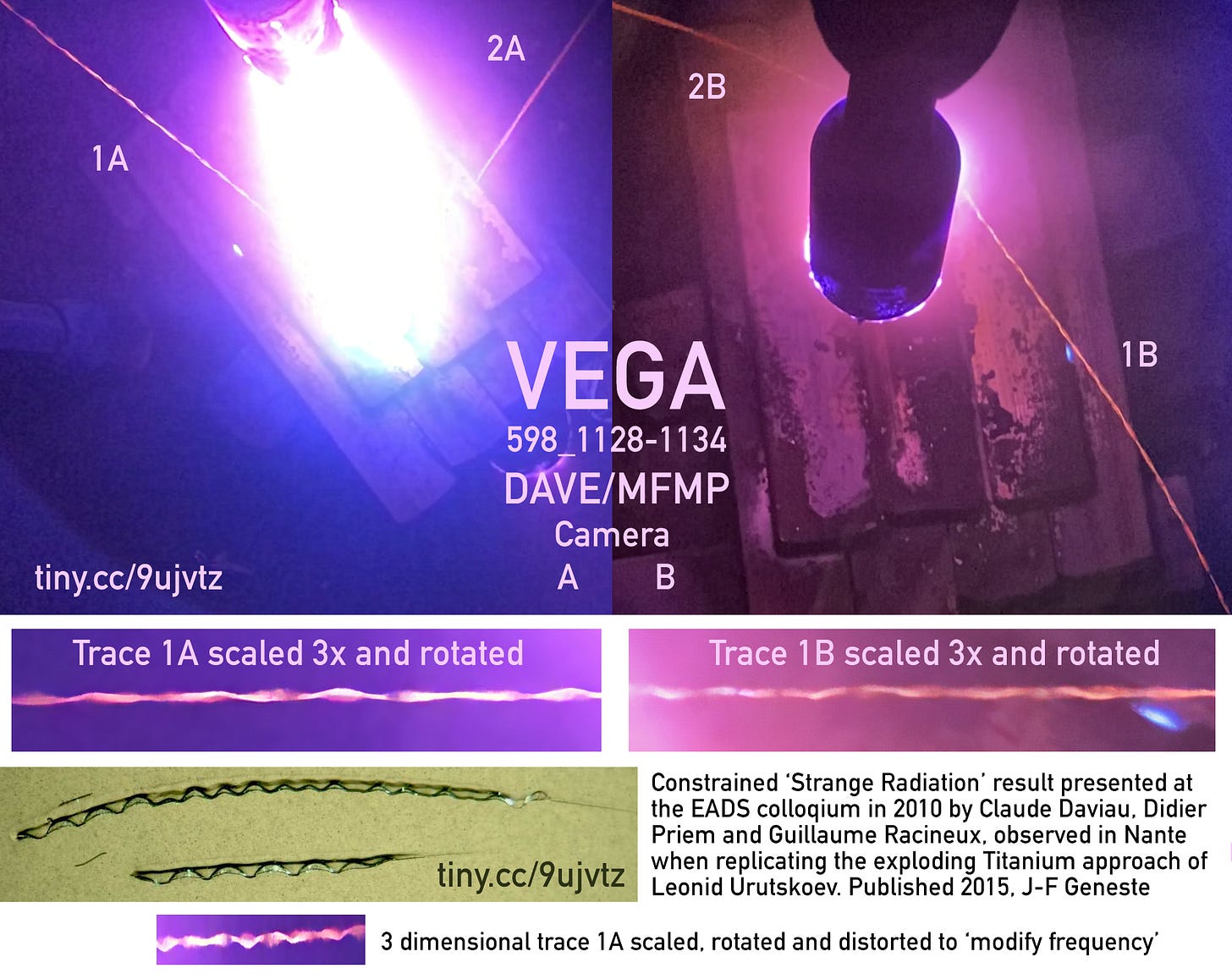
Interaction
In the video below (which you can view on youtube full frame), you can first see a sequence at 60fps and then at 30x slower (2fps). At the slower speed it appears that many of the traces are interacting with each other. You can download original here.
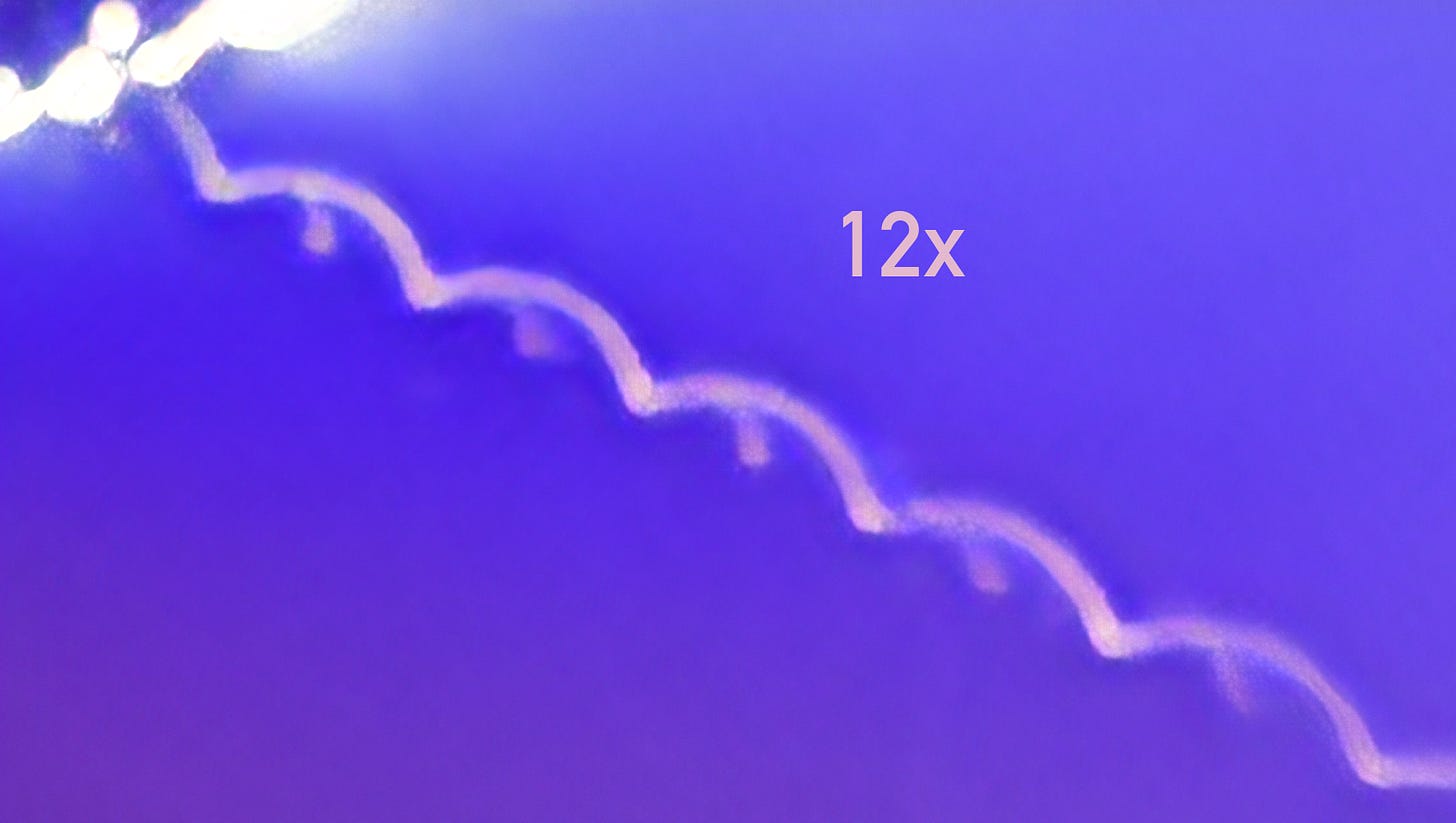

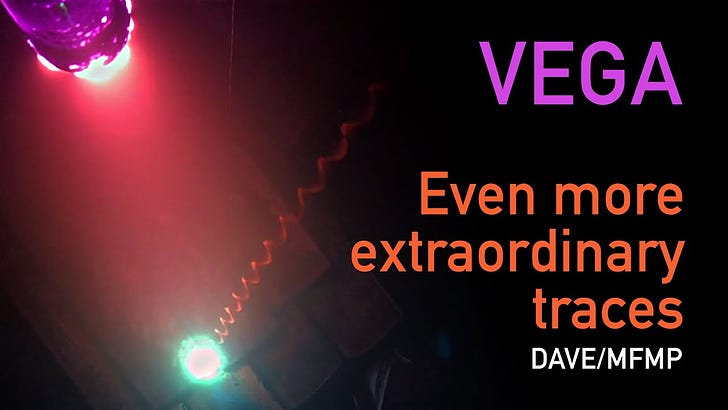

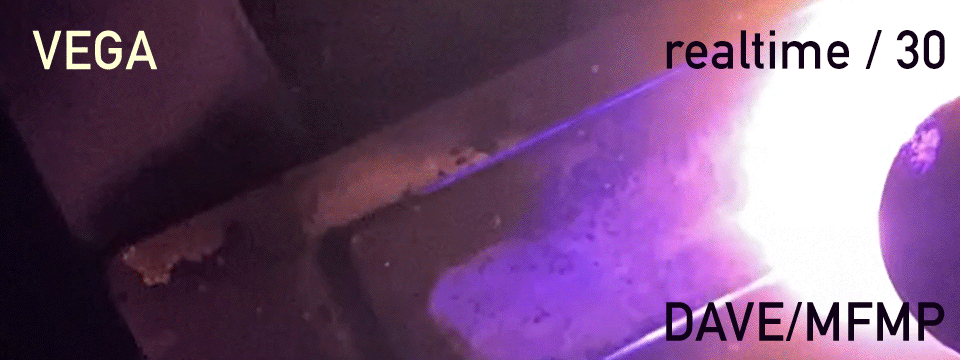
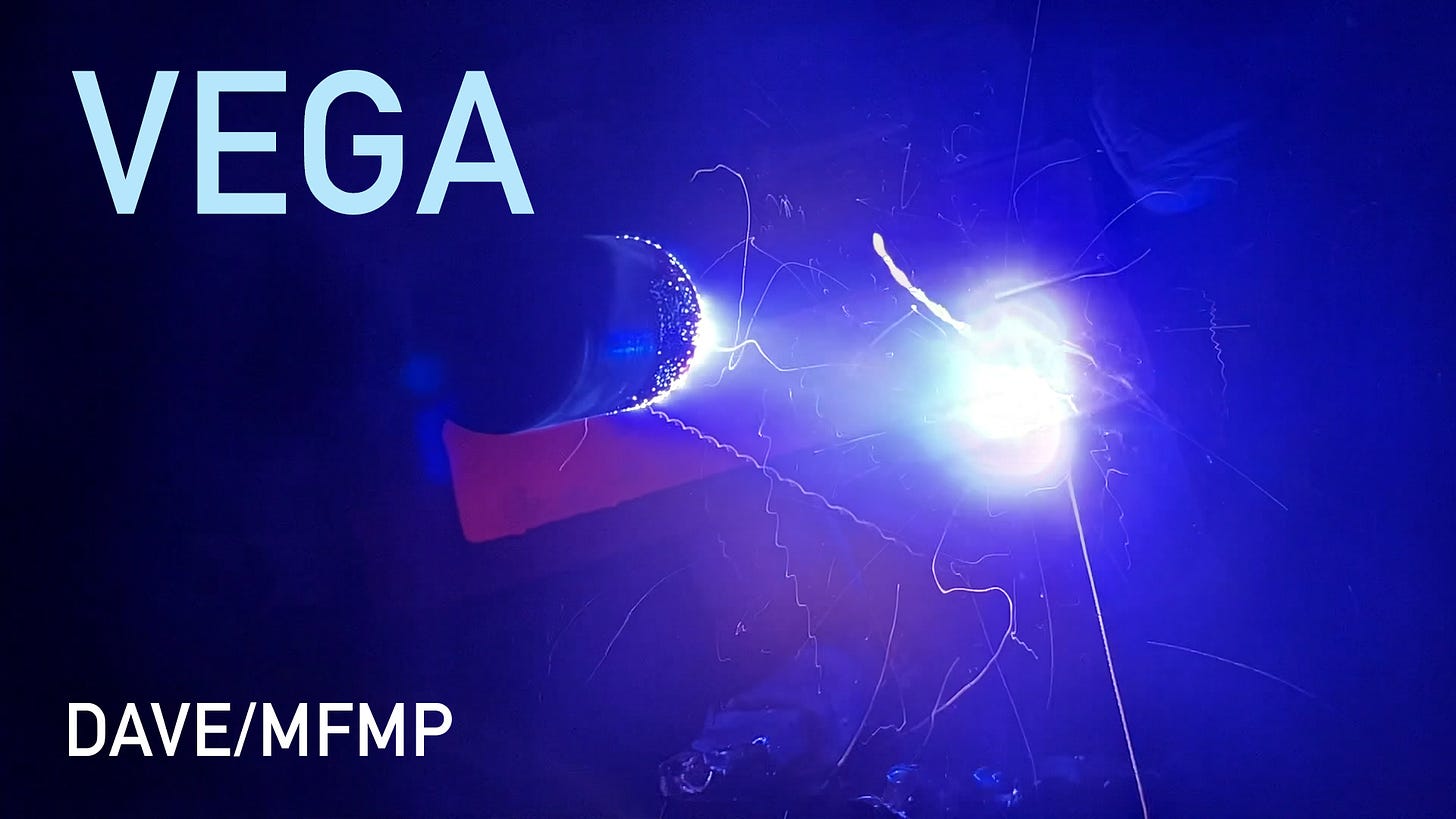
Bob, one major difference between the big spiral trace in the video and the SR tracs that are observed in many different classes of experiments is the SIZE. The ones you are seeing in the video that are well defined appear to be several mm in diameter where as the SR tracks seen on CDs and other surfaces are typically quite small in the uM size range. Not to say they could be the same structure creating the SR tracks as what is seen in the videos but is it noteworthy of the various sizes that appear in the VEGA chambers vs SR track sizes.
Bob; What is very interesting is that if some of these are indeed neutral as they seem to be by not being attracted to the anode then what makes them move in a spiral??? This is very strange and suggests that there may be other dynamics in play that govern their motion other than the simple magnetic/electric fields that we would assume initially to be the cause of the spiral motion. Also the charge moving through a magnetic field spiral motion may not be possible to describe the motion of some of these that simply seem to be oscillating along a 2D plane instead of in a spiral motion. Evidence is mounting as well that they may not be affected by a static magnetic field in some cases once they are launched as they do not seem to be affected by the ceramic magnet placed in the chamber when they come close to it. I am beginning to believe that the motion of these things in some situations is only affected by their brethren and the plasmoids on the cathode/anode through some sort of coherent/entangled interaction.